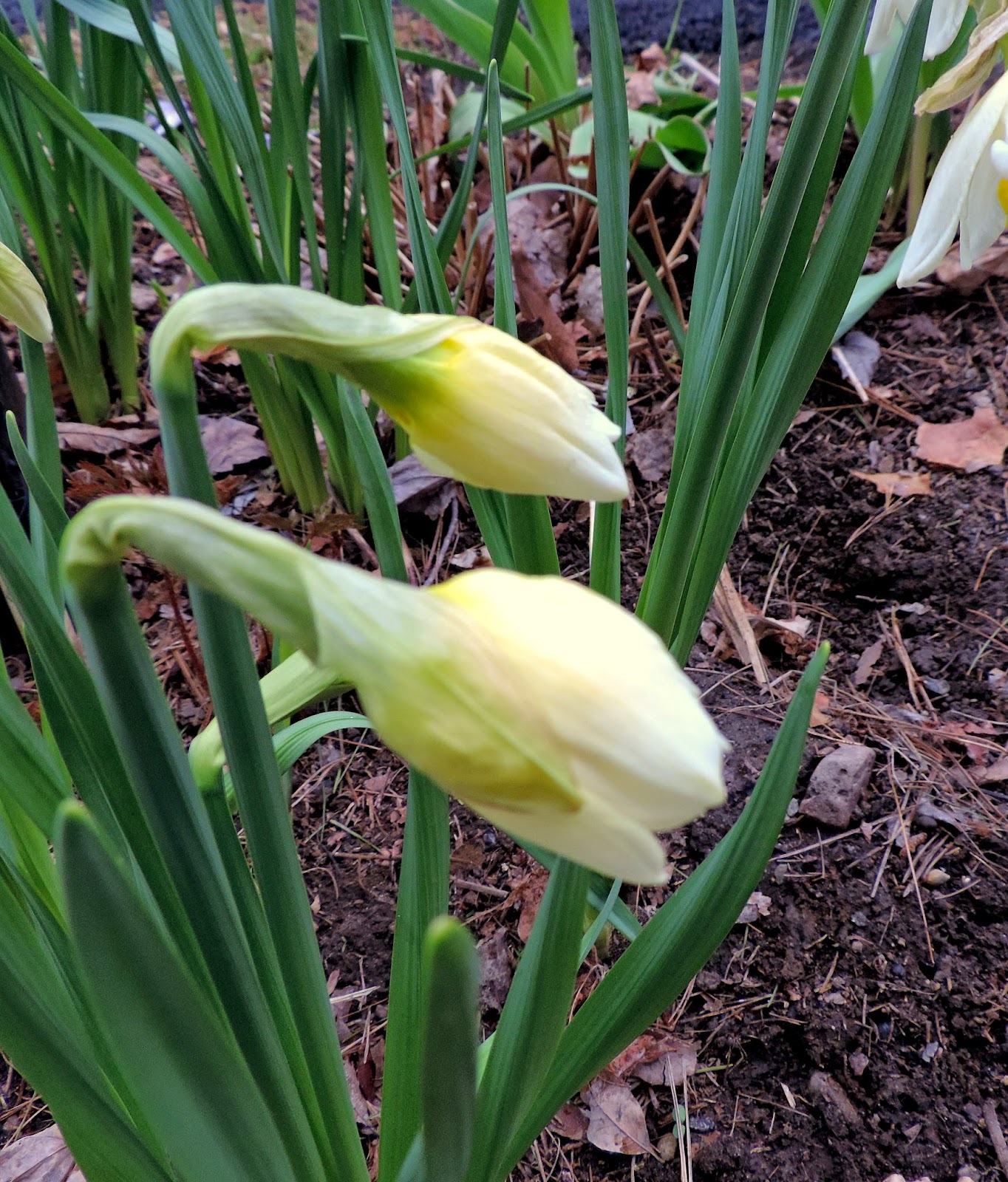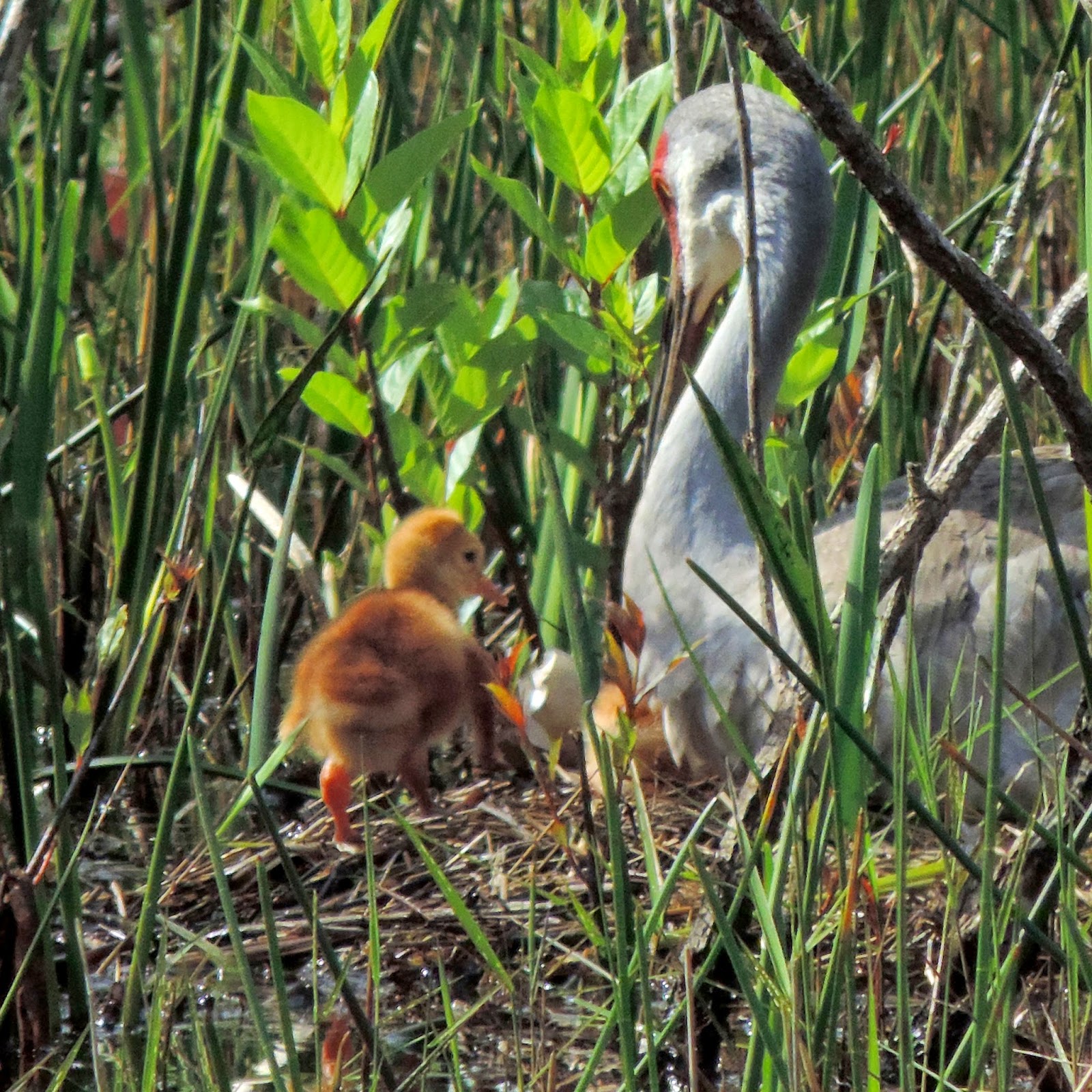 |
| Heading north on US Rte 81 through Virginia |
 Well, that certainly wasn't the case here in Upstate New York. Thank goodness. We pulled in our driveway and there were just a few crocuses blooming. The daffodils were up and there was color in the buds, but none of them had opened yet.
Well, that certainly wasn't the case here in Upstate New York. Thank goodness. We pulled in our driveway and there were just a few crocuses blooming. The daffodils were up and there was color in the buds, but none of them had opened yet. |
| Spring snow shower |
Then it snowed. Enough to cover the ground, too. It started off with just a few flakes floating around, but then it got heavier and started to accumulate. The next few days it was either raining, snowing or too cold or wet to work outside so I just spent those days washing clothes from our trip and putting stuff away like all the clothes I brought for the trip but either didn't need or didn't wear. When you travel that time of year you need winter clothes and summer clothes.
It was really nice to see the green grass again. It hasn't started growing yet, where it needs mowing, but I'm sure with the next warm spring rain it will shoot up fast.
 |
| Royal Star Magnolia bud |
The trees have not leafed out yet. There are just tiny buds on them. The weeping willows in the area are the first trees to fully leaf out. Currently their leaves are majestic in their lime green colors. They look like little feathers on the trees. The Royal Star Magnolia has some buds on it that are getting ready to open. Probably the next warm day they will pop out too.
I was able to get out this past Saturday for a few hours and start my yard work. I really saw a big difference in my flower gardens from previous years. What I remember doing different, is that last fall I was very diligent in keeping my garden beds clean and free of leaves and pine needles. And I tried to keep up with the weeding. I really think that made a difference in how my gardens look this year. Of course it could be that all those weed seeds haven't sprouted yet, too. And I also used "Preen" in some of the beds, too. "Preen" is a pre-emergent weed killer. It will kill weed seeds that haven't germinated. It won't kill existing weeds or any other perennial. If you want to use it, I recommend weeding your garden first, then apply the "Preen" according to package instructions. But, if you have seeds planted in your gardens, or you want some of your plants to go to seed then you don't want to use the "Preen". I didn't not use it in the gardens where I have foxgloves planted because they are a biennial and I want them to go to seed. If you would like more information on foxgloves or biennials check out my blog post Where Did My Foxgloves Go?
 |
| Finally some of the daffodils are blooming. |
I'm going to also put down some composted manure in some of the beds that have been neglected in awhile. I've found that after returning from a trip this time of year, that if we have an early spring, the perennials are so big it's hard to rake, weed or mulch around them. It's a lot easier to do it now rather then when your plants are a foot high or so. The mulch will keep the weed seeds down. Most weeds need sun to germinate. A layer of mulch will also help hold in the moisture, improve the soil structure and add nutrients when it breaks down.
 |
| White-throated Sparrow (looks like he has a white beard) |
I woke early this morning (about 5am) and was almost back to sleep when I thought I heard a Mourning Dove so I didn't pay any attention to it. But then I heard it again and realized it wasn't a dove but an owl. It stayed around for awhile singing its monotone "hooting". Needless to say, after that awakening I couldn't get back to sleep.
 |
| Hellebores |
 Hellebores. I thought I would highlight the Hellebores. The hellebores are deer resistant plants and that's probably because all parts of the plants are poisonous. Be careful handling the hellebores, because it's possible to get a rash just from planting them. The plants grow in clumps and depending on the variety they can grow up to two feet tall. The are often called "Lenten Rose" or "Christmas Rose". In our northern climate, they usually start to bloom late winter to early spring, depending on the location and variety of your plant. They are drought resistant, but do best in moist, well-drained soil. They do not like standing water. They will rot if they are too wet. They grow in either partial or full shade. The plants grow in USDA Hardiness Zones 4-9. The plants will reseed themselves, but because they are hybrids it may be different from the parent plant. Once the seedlings have developed a set of true leaves you can transplant them to another area of your garden. To keep them looking tidy, cut back the old growth (winter leaves that have turned brown) in the spring down to the ground.
Hellebores. I thought I would highlight the Hellebores. The hellebores are deer resistant plants and that's probably because all parts of the plants are poisonous. Be careful handling the hellebores, because it's possible to get a rash just from planting them. The plants grow in clumps and depending on the variety they can grow up to two feet tall. The are often called "Lenten Rose" or "Christmas Rose". In our northern climate, they usually start to bloom late winter to early spring, depending on the location and variety of your plant. They are drought resistant, but do best in moist, well-drained soil. They do not like standing water. They will rot if they are too wet. They grow in either partial or full shade. The plants grow in USDA Hardiness Zones 4-9. The plants will reseed themselves, but because they are hybrids it may be different from the parent plant. Once the seedlings have developed a set of true leaves you can transplant them to another area of your garden. To keep them looking tidy, cut back the old growth (winter leaves that have turned brown) in the spring down to the ground.
~ Have Fun This Spring ~
 |
| Our Welcome Home Committee - I think he spent the winter under our shed. |
Feel free to leave a comment.
Would love to hear from you!













